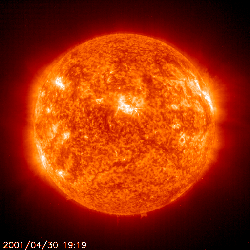 I happened to catch this article today while reading on the net. To me, this is truly impressive in two core ways:
I happened to catch this article today while reading on the net. To me, this is truly impressive in two core ways:
New solar cell material achieves almost 100% efficiency, could solve world-wide energy problems
Columbus (OH) – Researchers at Ohio State University have accidentally discovered a new solar cell material capable of absorbing all of the sun’s visible light energy. The material is comprised of a hybrid of plastics, molybdenum and titanium. The team discovered it not only fluoresces (as most solar cells do), but also phosphoresces. Electrons in a phosphorescent state remain at a place where they can be “siphoned off” as electricity over 7 million times longer than those generated in a fluorescent state. This combination of materials also utilizes the entire visible spectrum of light energy, translating into a theoretical potential of almost 100% efficiency. Commercial products are still years away, but this foundational work may well pave the way for a truly renewable form of clean, global energy.
The first thing about this that I find impressive is the use of supercomputers to solve these problems. Our advances in raw compute power are often talked about, but what is the real value delivered to us by all of this compute power? Well … massively efficient solar power would be a heck of a reward. From the article:
Supercomputers are enabling an entire new area of materials. No longer do scientists have to physically create samples of every possible material in the lab, only to test and document everything they find about it. Today they can set up a series of parameters and instruct a supercomputing machine to find the one that best aligns with their desires, wants and wishes. And while such computations often takes many days or even weeks for each trial material, it’s more economical and feasible than the old route. Plus, it enables materials like these which were, in this context, accidentally discovered using computers.
It is this ability to simulate and iterate – at incredible speeds – that allows us to evaluate the massive numbers of permutations and combinations to discover these types of solutons.
The second impressive aspect of this discovery, to me, is that we are now finding new uses for common foundation materials. We are now beginning to discover the unique ways in which materials can be combined to create just the right conditions to product energy from something as common as sunlight. If we can now rapidly transform this type of discover into an actual commercial material – which might take years – it could have immeasurable impacts of the lives of humans all over the globe.
